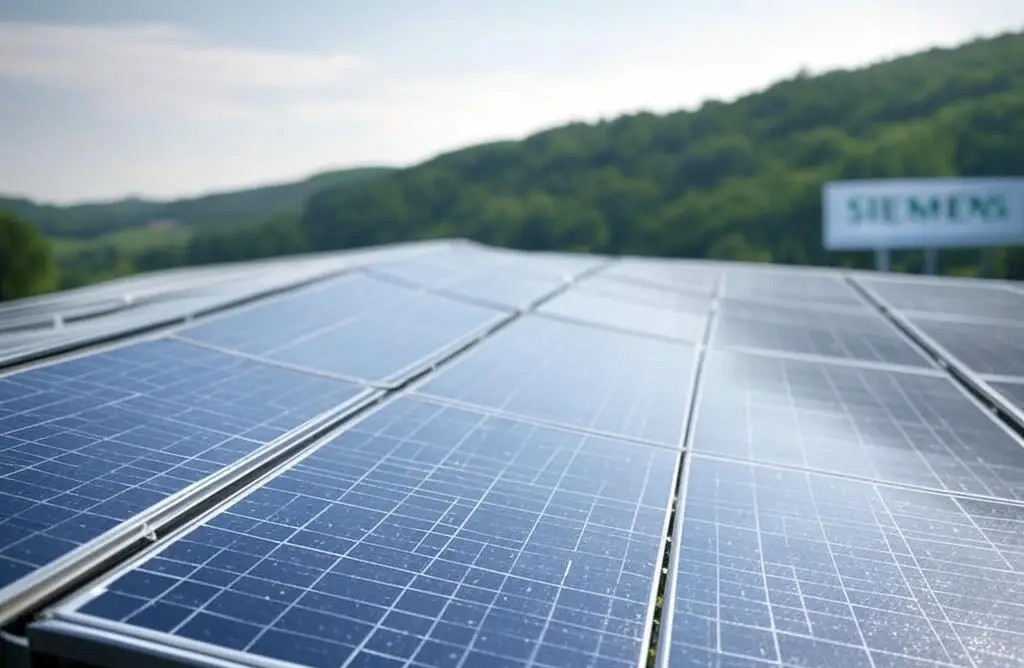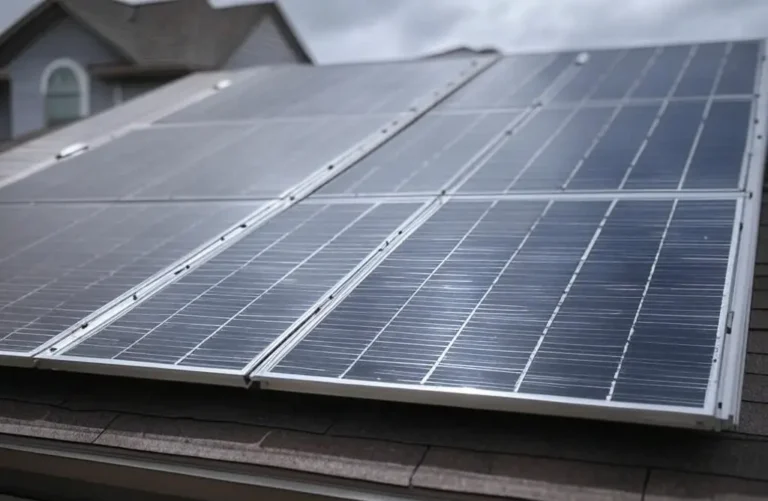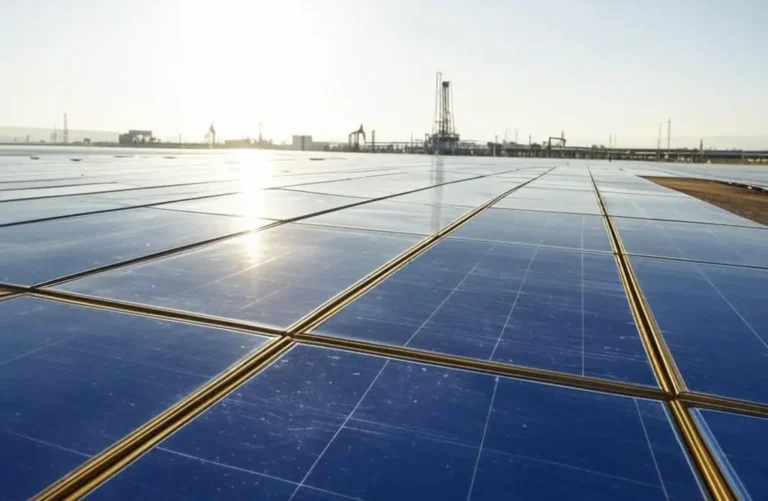Solar-Powered Pipeline Monitoring: Siemens Solar’s Advanced Solution for Oil and Gas
The oil and gas industry relies heavily on pipelines to transport resources across vast distances, and ensuring their integrity requires constant monitoring. Siemens Solar has introduced a groundbreaking application of photovoltaic (PV) technology to power pipeline monitoring systems, offering a sustainable, cost-effective alternative to traditional diesel generators. These solar-powered solutions provide reliable energy for sensors, communication devices, and control systems along pipelines, even in the most remote and harsh environments. This article explores the technology behind Siemens Solar’s pipeline monitoring systems, their benefits, challenges, real-world applications, and the transformative impact on the oil and gas sector, showcasing how renewable energy is enhancing one of the world’s most critical industries.
The Role of Pipeline Monitoring in Oil and Gas
Pipelines are the lifeblood of the oil and gas industry, spanning thousands of miles to connect extraction sites, refineries, and distribution points. Monitoring these pipelines is essential to detect leaks, pressure changes, and equipment failures, preventing costly spills and environmental damage. Traditionally, monitoring stations along pipelines have been powered by diesel generators or sporadic grid connections, both of which pose logistical and ecological challenges.
Siemens Solar recognized this need in the early 2010s, leveraging the Middle East’s solar potential to develop PV systems tailored for pipeline monitoring. With the region’s pipelines often stretching across deserts where sunlight is abundant—averaging 2,000-2,500 kWh/m² annually—these systems capitalize on natural conditions to deliver consistent, clean power. By replacing diesel with solar, Siemens Solar is reducing operational costs, minimizing emissions, and improving reliability for oil and gas companies worldwide.
Why Solar for Pipeline Monitoring?
Solar energy offers distinct advantages for this application:
- Cost Efficiency: Eliminates fuel transport costs, saving up to 80% on energy expenses.
- Reliability: Provides uninterrupted power in remote, off-grid locations.
- Sustainability: Reduces CO2 emissions by thousands of tons annually.
- Scalability: Easily adapts to small stations or extensive networks.
- Low Maintenance: Requires minimal upkeep compared to generators.
Siemens Solar’s Pipeline Monitoring Technology
Siemens Solar’s systems for pipeline monitoring are engineered to withstand the extreme conditions typical of oil and gas environments—high temperatures, dust storms, and isolation. The core components include high-efficiency PV panels, robust battery storage, smart inverters, and monitoring tools designed for seamless integration with pipeline infrastructure.
System Components
| Component | Function | Siemens Solar Advantage |
|---|---|---|
| PV Panels | Generate electricity from sunlight | 22% efficiency, dust-repellent coatings |
| Battery Storage | Stores energy for continuous operation | Lithium-ion, 10+ year lifespan |
| Inverter | Converts DC to AC power | Heat-resistant, smart switching |
| Monitoring System | Tracks energy and pipeline performance | Remote access via app or satellite |
The PV panels, typically from the SP series, are mounted on sturdy frames along the pipeline route, capturing sunlight to power sensors that measure pressure, temperature, and flow. Excess energy is stored in batteries, ensuring 24/7 operation, while the inverter converts power for compatibility with monitoring equipment. The system’s monitoring tools allow operators to oversee both energy production and pipeline health remotely, reducing the need for on-site visits.
Applications Across Pipeline Networks
Siemens Solar’s pipeline monitoring systems are deployed in various oil and gas contexts:
Desert Pipelines
In Saudi Arabia, a 500-mile pipeline uses 50 Siemens Solar stations, each with 10 kW systems, to power sensors and communication devices, ensuring real-time data collection across vast distances.
Offshore Support
Coastal pipelines benefit from hybrid solar systems that support monitoring buoys and onshore stations, reducing diesel reliance.
Arctic Operations
In colder climates, solar systems with enhanced battery storage power monitoring during summer months, supplemented by other sources in winter.
Benefits of Solar-Powered Monitoring
The adoption of solar energy in pipeline monitoring delivers significant advantages:
- Economic Savings: A single 10 kW station saves $20,000-$30,000 annually in fuel costs.
- Environmental Impact: Reduces emissions by 20-30 tons per station yearly.
- Operational Continuity: Ensures monitoring during grid outages or fuel shortages.
- Reduced Logistics: Eliminates frequent fuel deliveries to remote sites.
Real-World Case Studies
Saudi Arabia Pipeline Network
In 2020, Siemens Solar installed 50 solar-powered monitoring stations along a 500-mile pipeline in Saudi Arabia’s Eastern Province. Each 10 kW system, equipped with 20 kWh batteries, powers sensors and communication relays, reducing diesel use by 90% and saving $1.5 million annually. The project cut CO2 emissions by 1,500 tons in its first year, demonstrating solar’s scalability in large-scale oil operations.
Texas Pipeline Upgrade
A 2022 project in West Texas retrofitted a 200-mile pipeline with 20 Siemens Solar stations, each 5 kW with 10 kWh storage. The system powers pressure sensors and leak detectors, saving $600,000 yearly and enhancing safety.
Challenges and Siemens Solar’s Solutions
Key challenges include dust accumulation and extreme heat, common in pipeline regions like the Middle East. Siemens Solar addresses these with:
- Dust-Repellent Coatings: Reduce cleaning frequency by 50%.
- Heat-Tolerant Design: Panels and inverters operate efficiently up to 140°F (60°C).
- Remote Monitoring: Minimizes on-site maintenance needs.
Technical Specifications
Siemens Solar’s pipeline systems are built for performance:
- Power Output: 5-50 kW per station, depending on needs.
- Battery Capacity: 10-100 kWh, scalable.
- Efficiency: Panels up to 22%.
- Durability: Rated for 25 years, withstands winds up to 150 mph.
Installation and Maintenance
Installation is streamlined for remote sites:
- Site Assessment: Evaluates sunlight and equipment needs.
- Design: Custom layouts for pipeline routes.
- Installation: Completed in 1-2 days per station.
- Maintenance: Minimal, with remote diagnostics.
Economic and Environmental Impact
A network of 50 stations can save $1-2 million annually and reduce emissions by 1,000-2,000 tons, aligning with industry sustainability goals.
Future Potential
Siemens Solar aims to expand solar use in oil and gas, integrating AI for predictive maintenance and hybrid systems with wind power.
Conclusion
Solar-powered pipeline monitoring is a game-changer, and Siemens Solar is leading the way. Visit our site to explore this innovative application.




